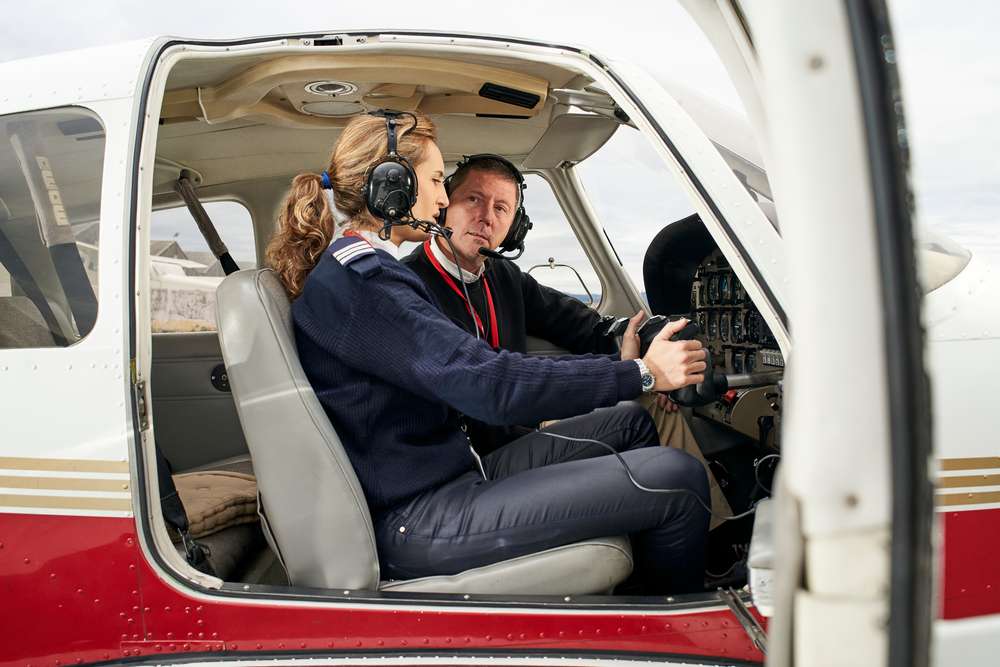Professional aviation training for aspiring pilots and crew
Rigorous aviation training ensures that aspiring pilots and crew members gain the essential knowledge and hands-on experience they need for safe flight operations. Accredited instructors guide candidates through aerodynamics, flight systems, and emergency procedures in both simulator and real aircraft environments. Trainees emerge with aviation readiness, confidence, and eligibility for licensure.

What is the structure of pilot licensing and ratings training?
Pilot licensing and ratings training follows a structured path that begins with obtaining a private pilot license (PPL) and progresses through various levels of certification. The journey typically starts with ground school, where students learn the fundamental principles of aviation, including aerodynamics, meteorology, navigation, and flight regulations.
After completing ground school, aspiring pilots move on to flight training, where they gain hands-on experience in aircraft operation. This phase includes a minimum number of flight hours, both solo and with an instructor, to develop essential skills such as takeoffs, landings, and basic maneuvers.
Once a student pilot has met the requirements for a PPL, they can pursue additional ratings and certifications, such as instrument rating, multi-engine rating, and commercial pilot license. Each level builds upon the previous one, introducing more complex skills and knowledge areas.
How do simulators enhance flight decision-making skills?
Flight simulators play a crucial role in modern aviation training, offering a safe and cost-effective way to practice various scenarios and improve decision-making skills. These advanced systems replicate real-world flight conditions with remarkable accuracy, allowing pilots to experience a wide range of situations they may encounter during actual flights.
Simulators are particularly valuable for training pilots to handle emergency situations and adverse weather conditions. Instructors can programmatically introduce system failures, engine malfunctions, or unexpected weather changes, challenging trainees to respond quickly and appropriately. This type of training helps pilots develop critical thinking skills and build confidence in their ability to manage complex situations.
Moreover, simulators enable pilots to practice procedures for specific aircraft types and airports, familiarizing themselves with cockpit layouts and navigation systems before stepping into a real aircraft. This not only enhances safety but also reduces the time and cost associated with training in actual aircraft.
Why is regulatory knowledge important in aviation careers?
A thorough understanding of aviation regulations is paramount for anyone pursuing a career in the industry. Regulatory knowledge ensures that pilots, crew members, and support staff operate within the legal framework established by aviation authorities such as the Federal Aviation Administration (FAA) in the United States or the European Union Aviation Safety Agency (EASA) in Europe.
Aviation regulations cover a wide range of topics, including airspace classifications, flight planning requirements, maintenance standards, and crew duty time limitations. Compliance with these regulations is essential for maintaining safety standards and ensuring the smooth operation of air transportation systems.
For pilots, regulatory knowledge is a key component of their training and ongoing professional development. They must stay current with changes in regulations and understand how these rules apply to their specific operations. This knowledge is regularly tested during licensing exams, recurrent training, and practical evaluations.
What are the key components of crew member training?
While pilot training often receives the most attention, the training of other crew members is equally important for safe and efficient flight operations. Flight attendants, for example, undergo comprehensive training that covers a variety of areas:
-
Safety and Emergency Procedures: This includes evacuation techniques, use of emergency equipment, and handling various in-flight emergencies.
-
First Aid and Medical Emergencies: Crew members learn to provide basic medical assistance and use onboard medical equipment.
-
Customer Service: Training in passenger care, conflict resolution, and cultural sensitivity.
-
Security Protocols: Identifying and responding to potential security threats.
-
Aircraft-Specific Training: Familiarization with different aircraft types and their unique features.
Ground crew members, such as dispatchers and maintenance technicians, also receive specialized training tailored to their roles. This ensures that all aspects of flight operations are handled by competent professionals who understand the importance of their contributions to aviation safety.
How much does professional aviation training cost?
The cost of professional aviation training can vary significantly depending on the type of program, location, and desired certifications. Here’s a general overview of training costs for different aviation career paths:
| Training Type | Estimated Cost Range | Duration |
|---|---|---|
| Private Pilot License (PPL) | $10,000 - $20,000 | 3-6 months |
| Commercial Pilot License (CPL) | $30,000 - $80,000 | 9-24 months |
| Airline Transport Pilot License (ATPL) | $60,000 - $150,000 | 18-36 months |
| Flight Attendant Training | $3,000 - $5,000 | 4-8 weeks |
| Aircraft Maintenance Technician | $20,000 - $50,000 | 18-24 months |
Prices, rates, or cost estimates mentioned in this article are based on the latest available information but may change over time. Independent research is advised before making financial decisions.
It’s important to note that these costs can vary based on factors such as the flight school’s reputation, the type of aircraft used for training, and the student’s progress rate. Additionally, some airlines offer cadet programs or scholarships that can significantly reduce the financial burden for aspiring pilots.
Professional aviation training is a significant investment in both time and money, but it opens the door to a rewarding and dynamic career in the aviation industry. The comprehensive nature of this training ensures that graduates are well-prepared to face the challenges and responsibilities of their chosen aviation roles, contributing to the overall safety and efficiency of air travel worldwide.




